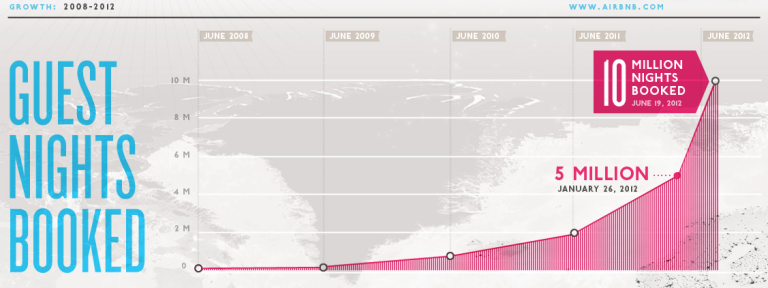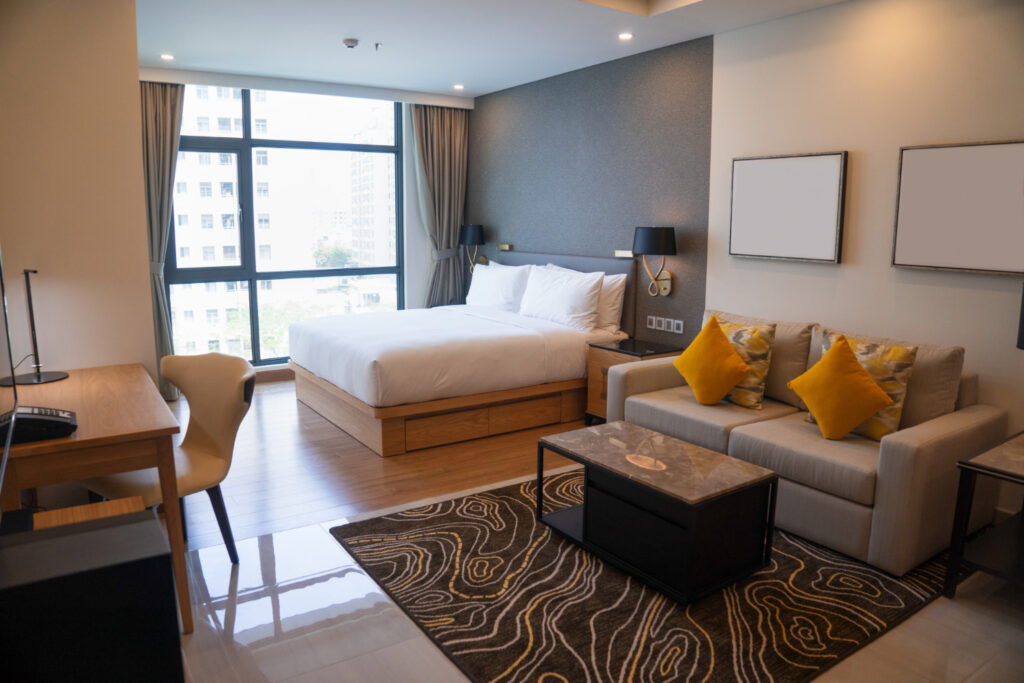Do you want to create a website like Airbnb? Focus on this startup whose success is the stuff of dreams. We’ll start with a quick history of the startup and then we’ll see what the keys to its success were. Finally, we’ll take a quick look at sites similar to Airbnb.
1- Airbnb story
It all started when the two first co-founders Brian Chesky and Joe Gebbia settled in San Francisco at the end of 2007 and found themselves in financial difficulty to pay their rent. They thought of renting out part of their flat at a time when hotels were full. They provide their guests with inflatable mattresses and serve them breakfast, hence the name of the ancestor of Airbnb: Airbedandbreakfast. The site, developed by their friend Nathan Blecharczyk, who joined the adventure and became the third co-founder, was launched in August 2008.
When they decided to build the marketplace website, they have to finance their startup. They decided to sell cereal boxes bearing the effigy of the American presidential candidates of the time, which led them to meet Paul Graham from the famous startup accelerator Y Combinator, which they joined in early 2009. The site then changed its concept and name to become the current Airbnb, where individuals can offer their entire flat for rent. The company then began to grow significantly in 2009 and raised several funds in 2010 and 2011.
From 2011 onwards, it opened several offices around the world, including one in Paris. The growth is then exponential: in January 2012, 5 million bookings were recorded since the creation of the site, in June 2012 10 million… Airbnb begins to be truly profitable and records profits from the second half of 2016. In 2017 it is valued at nearly 31 billion dollars.

2- From Air Mattresses to Mansions: The Evolution of Airbnb
Like we say it before, Airbnb’s journey began in 2007 as a quirky experiment, offering air mattresses on a living room floor. But this simple idea has morphed into a hospitality behemoth, fundamentally transforming the travel industry. Let’s explore the key stages of Airbnb’s evolution:
- 1. Early Days: Building Trust and Community (2007-2012): Initially, trust was a major hurdle. Airbnb tackled this by implementing user verification systems and insurance programs. They also fostered a vibrant community through reviews, messaging tools, and local events, creating a sense of shared responsibility and safety.
- 2. Expansion and Diversification (2012-2017): Airbnb’s reach exploded, offering listings in exotic destinations and catering to diverse budgets. They introduced categories like “experiences” and “luxury” to cater to different traveler needs. Partnerships with airlines and other travel platforms further boosted their reach.
- 3. Challenges and Maturation (2017-Present): As Airbnb grew, so did scrutiny. Regulatory hurdles arose, and concerns about gentrification and safety surfaced. Airbnb responded by collaborating with local governments, implementing stricter safety measures, and promoting responsible hosting practices. They also focused on sustainability initiatives.
In 2024, Airbnb stands as a major player in the travel industry, offering a unique blend of personalized experiences and economic opportunities for hosts. While challenges remain, their ability to adapt and evolve ensures they continue to redefine the way we travel and connect with the world.
3- Keys to success
There are many technical and marketing factors that explain Airbnb’s success. In 2009 the site’s revenues were struggling to take off. The three co-founders went to meet their users in New York where they had the most users. They realized that the photos of flats used in users’ ads were often of poor quality. They decided to take professional photos of these flats, which would initiate the growth of Airbnb. But this action is not the only reason for their growth. It is also explained by another growth-hacking trick: each ad created on Airbnb was created on the Craigslist ad site. Before this hack, the Airbnb team was already trying to contact Craigslist users to suggest that they create their flat rental ads on Airbnb.
The design of the website itself plays an important role in the success of the project. Indeed, good ergonomics, good design and simplicity of use make it possible to better convert users, both on the side of those who create the ads, who will then decide to offer their property for rent on the site, and on the side of those who are looking to rent a flat for a short period. The user experience must be carefully designed (search, filters, information display, intuitive navigation, online booking and payment process, etc.). A marketplace is in fact the meeting of supply and demand; if one of the two is missing, the marketplace will not be viable. This implies having a very good referencing on search engines to attract suppliers and buyers. The work of referencing begins with a good “seo friendly” design.
4- Other websites like Airbnb
Here we are going to look at sites that are really in the same niche as Airbnb, i.e. short term accommodation rental. I say this because if you have come across this article it is perhaps because you were looking for information on “how to create a website like Airbnb” without trying to make a clone of Airbnb but rather a marketplace in the same style as Airbnb. We will have the opportunity to talk about other marketplace businesses in other articles.
If you project to create a website like Airbnb, you have to know the alternatives already in the market. For exemple Vrbo, formerly known as Vacation Rentals by Owner, focuses on private homes and villas, often managed by professional property managers. We have also GlampingHub for nature enthusiasts seeking unique getaways. This website offers luxury camping experiences. From canvas tents nestled in stunning landscapes to treehouses and yurts, it provides a unique blend of nature immersion and comfort. Its focus on eco-friendly practices and off-the-beaten-path locations appeals to environmentally conscious travelers.
For travelers, Homestay.com is a platform that connects local families who offer room and board in their homes. This immersive experience allows travelers to truly live like a local, experience authentic culture, and gain insights into the destination. Homestay.com emphasizes cultural exchange and community connection, appealing to travelers seeking meaningful adventures.
Than we have, Plum Guide and Hipcamp. The first one is targeting discerning travelers seeking a luxurious home away from home, it offers a personalized touch with concierge services and curated experiences. For the second one, Hipcamp, the platform caters to outdoor enthusiasts seeking campsites on private land, ranging from rustic options to glamping sites with amenities.
Conclusion
Keep in mind that not all the Airbnb-type marketplaces mentioned above were created with a CMS such as Prestashop, Magento, WordPress or a solution in SAAS mode. These marketplaces are the result of custom development that meets the specific needs and desires of the founders. Of course, as we have seen, the design and the technical side are not everything, but a good product remains the basis for long-term success. When a custom development requires large investments, we advise young entrepreneurs to launch an MVP (minimum viable product) to test their concept in order to ensure that their project is viable. With the marketplace builder of Medialem, we offer affordable rates for the creation of a custom marketplace.
Belkacem – SEO Consultant specializing in Marketplaces
Belkacem is an SEO/SEA Consultant specializing in marketplaces and Content Manager at Medialem. He has contributed to numerous organic and paid search projects for Medialem and its clients, as well as writing guides for entrepreneurs.

